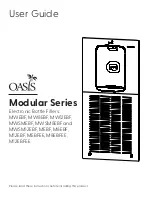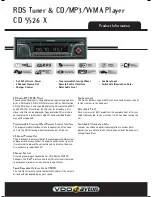
7. NAVIGATION SYSTEM INFORMATION
1. LIMITATIONS OF THE NAVIGATION SYSTEM
7. NAVIGATION SYSTEM INFORMATION
This navigation system calculates the
current vehicle position using satellite
signals, various vehicle signals, map
data, etc. However, an accurate
position may not be shown depending
on
satellite
condition, road
configuration, vehicle condition or
other circumstances.
The Global Positioning System (GPS)
developed and operated by the U.S.
Department of Defense provides an
accurate current vehicle position, normally
using 4 or more satellites, and in some
case 3 satellites. The GPS system has a
certain level of inaccuracy. While the
navigation system will compensate for this
most of the time, occasional positioning
errors of up to
100 m (300 feet) can and should be
expected. Generally, position errors will
be corrected within a few seconds.
The GPS signal may be physically
obstructed, leading to inaccurate vehicle
position on the map display. Tunnels,
tall buildings, trucks, or even the
placement of objects on the instrument
panel may obstruct the GPS signals.
The GPS satellites may not send signals
due to repairs or improvements being
made to them.
Even when the navigation system is
receiving clear GPS signals, the vehicle
position may not be shown accurately or
inappropriate route guidance may occur in
some cases.
NOTICE
The installation of window tinting may
obstruct the GPS signals. Most window
tinting contains some metallic content that
will interfere with GPS signal reception of
the antenna. We advise against the use of
window tinting on vehicles equipped with
navigation systems.
Accurate current vehicle position may not
be shown in the following cases:
• When driving on a small angled Y-
shaped road.
• When driving on a winding road.
• When driving on a slippery road such as
in sand, gravel, snow, etc.
• When driving on a long straight road.
• When highway and surface streets run
in parallel.
• After moving by ferry or vehicle carrier.
• When a long route is searched during
high speed driving.
• When driving without setting the current
position calibration correctly.
• After repeating a change of direction by
going forward and backward, or turning
on a turntable in the parking lot.
• When leaving a covered parking lot or
parking garage.
• When a roof carrier is installed.
• When driving with tire chains installed.
• When the tires are worn.
• After replacing a tire or tires.
• When using tires that are smaller or
larger than the factory specifications.
• When the tire pressure in any of the four
tires is not correct.
1. LIMITATIONS OF THE NAVIGATION SYSTEM
156









































